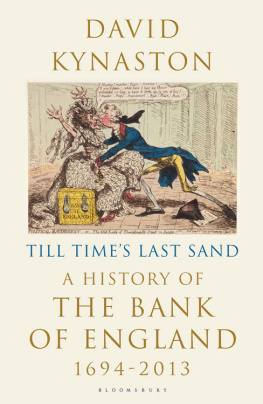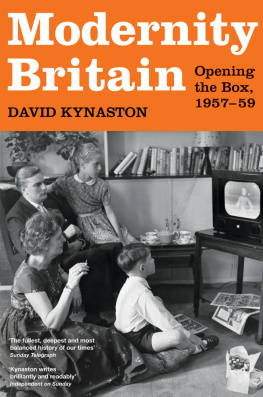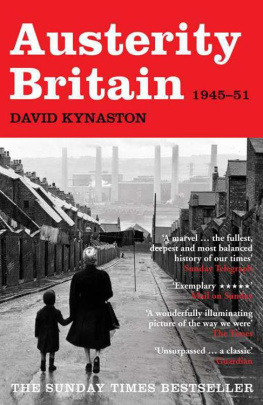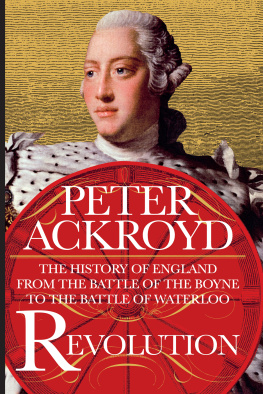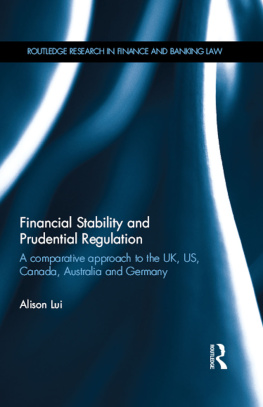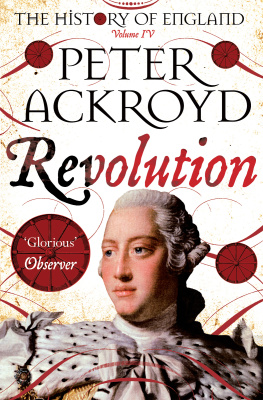
TILL TIMES LAST SAND

Thus at thy helm of Gold, thy short-livd Pride,
No abler, trustier pilot-hand could guide:
That fair Foundation Royal, that (if my
Too poor Propheticks may dare speak so high)
Beyond her yet too narrow lease shall stand
With its unshaken head, till times last sand;
Whose circulating warmth shall never cease,
At once the nerves of War and veins of Peace:
Commerce, Arts, Arms, all her own fair increase,
A Treasury, from whose diffusive mine
Our glebe shall fatten, and our Throne shall shine.
From Elkanah Settle, Augusta Lachrymans: a Funeral Tear to the Memory of the Worthy and Honourd Michael Godfrey, Esq. (1695)
I once had the temerity to ask a central banker the secret of his craft. It all depends, he said, on making the right-sounding noises at the right time. He then abruptly changed the subject, and started discussing with patently spurious animation the prospects of Sussex in the County Cricket Championship.
Lombard Lane, Punch, 14 August 1963
I was honoured to be asked in 2009 by the then governor, Mervyn King, to undertake a single-volume history of the Bank of England. Other commitments and unavoidable circumstances have delayed the books preparation, but the work itself has been both challenging and enjoyable. From the start we were agreed that I would retain complete independence of judgement; and the Bank has admirably kept to its word. We were also agreed that this would be a book for the general reader, not the specialist, and I am very conscious that for all its length this is a far from comprehensive account of the Banks activities over the years. The reader who wishes to go wider and deeper should in the first instance consult the notable series of books on specific periods of the Banks history: Sir John Clapham (1944) on 1694 to 1914; Richard Sayers (1976) on 1891 to 1944; John Fforde (1992) on 1941 to 1958; and Forrest Capie (2010) on the 1950s to 1979. In addition, on the domestic side of the Bank, the reader wanting more should go to W. Marston Acres (1931) for the first two centuries or so and to Elizabeth Hennessy (1992) for 1930 to 1960. I have drawn heavily on the pioneering work of all these historians, as I also have on my own four-volume history of the City of London, for each volume of which I did a considerable amount of archival research at the Bank. At the end of writing this book, I find myself thinking not for the first time of the haunting words that Richard Sayers wrote on completing his history: I am all too aware of its imperfections and shortcomings, and can only plead, in the phrase of Hippocrates and Chaucer, so short the life, so long the craft to learn.
March 2017
The Commissioners for the new Bank came this morning to Mercers Chapel, where the books were opened, noted the dogged chronicler Narcissus Luttrell on Thursday, 21 June 1694. Tis said, he added, the subscriptions already amount to 300,000. Luttrell was right: the capital-raising process for the putative Bank of England was off to a cracking start. In addition to King William and Queen Mary (jointly contributing 10,000, the maximum permitted), other first-day subscribers included the first lord of the Treasury (Lord Godolphin, 4,000), a clockmaker (John Ebsworth, 1,000), a salter (John English, 500), an apothecary (Nicholas Gambier, 600), a host of merchants, and a gentleman from the town of St Albans in the county of Hertfordshire (John Gape, 500). The following Tuesday a friend told the political philosopher John Locke that he had subscribed 300 which, Locke then informed another friend, made me subscribe 500 while even before that, on the 25th, one of the opponents of the new institution had faced up to painful reality. I am informed, the Duke of Leeds wrote from his Yorkshire fastness to his London bankers, That subscriptions to the Bank do fill so fast, that their is at this day near 700000 subscribed, so that it must now nesesarily be a bank. I therfore desire that you will subscribe foure thousand pound for mee The overall target was 1.2 million (25 per cent payable in cash), and it was reached at Mercers Hall in Cheapside on the tenth day, 2 July, with the last of the 1,268 subscribers being Judith Shirley of Preston in Sussex, staking a modest 75.
Three men above all had been responsible for getting the Bank (as the Bank of England would in time be familiarly called) to this
There followed the successful subscription of late June and early July, ensuring that it would be a certainty. On 5 July, three days after the books had closed, an announcement in the London Gazette summoned all subscribers of 500 or more to meet on the 10th at 8am at Mercers Hall. There, after swearing that the sum subscribed had been their own proper money, they were to give in Riting, Rolled up, the Names of Two Such Persons as they think fit, one to be governor of the new bank, the other deputy governor. The election duly happened, resulting in Godfrey (an 8,000 subscriber) being named deputy governor, with another prominent City merchant, Sir John Houblon (a 10,000 subscriber), as governor. Next day the process was repeated, with twenty-four of the subscribers being chosen as the Banks first set of directors. Governor, deputy governor and most of the directors then assembled at Mercers Hall just over a fortnight later, on the afternoon of Friday, 27 July, for their first Court, hours after the Banks Charter had been formally sealed at the Lincolns Inn Fields house of Sir John Somers, lord keeper of the Great Seal. The immediate issue faced by the fledgling body was to determine the appropriate method of giving Receipts for running Cash:
Upon putting the Question after a long Debate, It was Resolved, That these three Methods shall be observed & none other
1st To give out Running=Cash=Notes, and to endorse on them what is paid off in part
2nd To keep an Accompt with ye Creditor: in a Book or Paper of his owne
3rd To accept Notes drawn on ye Bank
And it is Ordered that no Creditor shall use any two of the said methods
The second option was in effect pass-book banking, the third option cheque-book banking; but almost certainly the preferred option was the first a recognition of (in Derrick Byatts 1994 words, referring to the goldsmith-bankers who had emerged in London since the 1630s) the advantage to commerce generally of the goldsmiths note payable to a named depositor or order (later, or bearer). And thus, he added, was laid the foundation stone for the Banks series of note issues down the centuries.

On the occasion of an earlier anniversary, the 250th in 1944, a more celebrated historian of the Bank, Sir John Clapham, opened his account with a sentence that would become much quoted: The establishment of the Bank of England can be treated, like many historical events both great and small, either as curiously accidental or as all but inevitable. And he went on: Had the country not been at war in 1694, the government would hardly have been disposed to offer a favourable charter to a corporation which proposed to lend it money. Had Charles Montagu, a Lord of the Treasury, and from [May] 1694 Chancellor of the Exchequer, not thought that, out of several scores of financial schemes submitted to him, this was on the whole the most promising, there would again have been no charter or perhaps quite a different one. Context is often all, and perhaps peculiarly so in the case of this quasi-accidental institution that would achieve a rare permanence.
Next page
